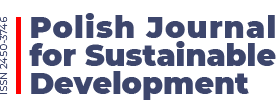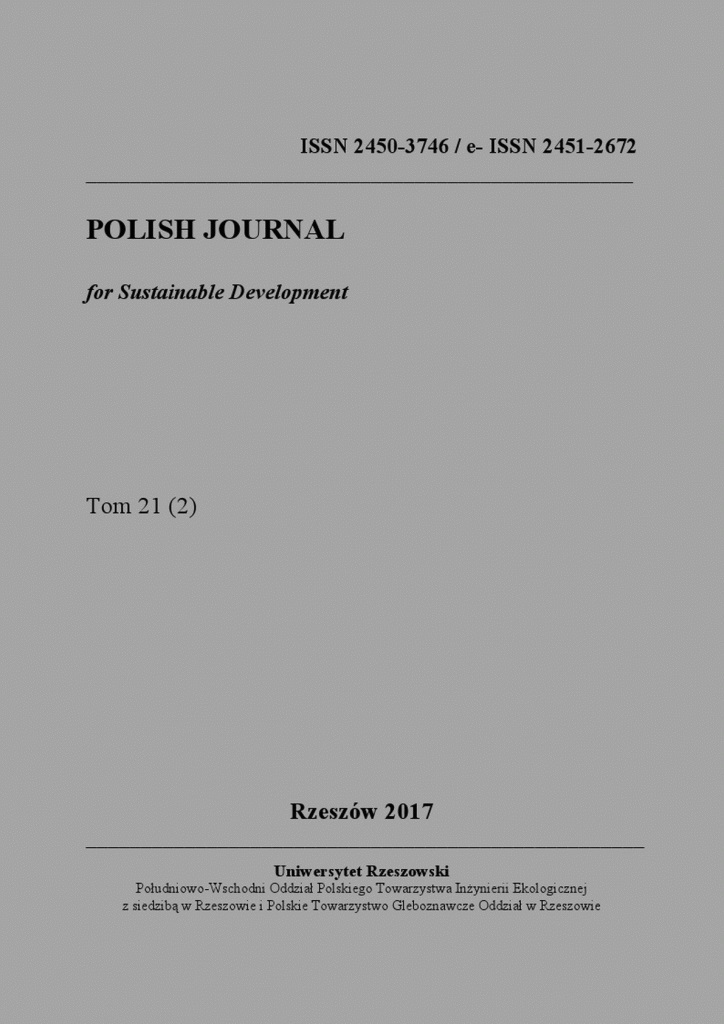Wpływ zanieczyszczenia światłem na entomofaunę
DOI:
https://doi.org/10.15584/pjsd.2017.21.2.1Słowa kluczowe:
zanieczyszczenie światłem, owady nocne, zakłócenie migracjiAbstrakt
Dynamiczny rozwój obszarów zurbanizowanych i coraz intensywniejsze ich naświetlenie, powodujące zanieczyszczenie światłem (light pollution), może mieć daleko idący wpływ na wiele organizmów żywych. Jak wykazały przeprowadzone obserwacje zanieczyszczenie środowiska sztucznym światłem może mieć wpływ nie tylko na naturalne reakcje owadów na światło – fototropizm i fotoperiodyzm, ale także w konsekwencji na zaburzenie ich występowania w środowisku naturalnym. Szczególnie groźne może być to w przypadku gatunków o bardzo wysokiej specjalizacji pokarmowej, które w środowisku zurbanizowanym nie znajdą warunków do swego rozwoju.
Downloads
Bibliografia
Antignus Y. 2000. Manipulation of wavelenght-dependent behaviour of insects : an IPM tool to impede insects and restricts epidemics of insect-borne viruses. Virus Research. 71(1-2). 213-220.
Blaik T., Hebda G., Masłowski J. 2016. Cydalima perspectalis (Walker, 1859) – inwazyjny gatunek motyla w faunie Polski (Lepidoptera: Crambidae). Przyroda Sudetów. 19. 121-124.
Crichton M.I. 1974. The interpretation of light trap catches of Trichoptera from the Rothamsted Insect Survey. [w:] Malicky H. (red.) Proc. of the First Int. Symp. On Trichoptera. W. Junk b.v. Publishers. The Hague. 1974. 147-158.
Dantas-Torres F., Tarallo V.D., Latrofa M.S., Falchi A., Lia R.P., Otranto D. 2014. Ecology of phlebotomine sand flies and Leishmania infantum infection in rural area of southern Italy. Acta Tropica. 137. 67-73.
Firebaugh A., Haynes K.J. 2016. Experimental tests of light-pollution impacts on nocturnal insects courtship and dispersal. Oecologia. doi: 10.1007/s00442-016-3723-1.
Gaglio G., Brianti E., Napoli E., Falsone L., Dantas-Torres F., Tarallo V.D., Otranto D., Giannetto S. 2014. Effect of night time-intervals, height of traps and lunar phases on sand fly collection in highly endemic area for canine leishmaniasis. Acta Tropica. 133. 73-77.
Lancore T., Rich C. 2004. Ecological light pollution. Frontiers in Ecology and the Environment. 2. 191-198.
Le Trionnaire G., Francis F., Jaubert-Possamai S., Bonhomme J., De Pauw E., Gauthier J-P., Haubruge E., Legeai F., Prunier-Leterme N., Simon J-C., Tanguy S., Tagu D. 2009. Transcriptomic and proteomic analyses of seasonal photoperiodism in the pea aphid. BMC Genomics. 10:456. doi: 10.1186/1471-2164-10-456.
Mukai A., Goto S.G. 2016. The clock gene period is essential for the phptoperiodic response in the jewel wasp Nasonia vitripennis (Hymenoptera: Pteromalidae). Appl. Entomol. Zool. 51. 185-194.
Reznik S.Ya., Ovchinnikov A.N., Dolgovskaya M.Yu., Belyakova N.A. 2015. Interspecific Variation in Photoperiodic Effect on the Rate of Preimaginal Development in Harmonia axyridis (Pallas) (Coleopera, Coccinellidae). Entomological Review. Vol. 95. No. 1. 15-27.
Utono I.M., Gibson G. 2015. New „stimuli-enriched” laboratory bioassay used to identify improved botanical repellent treatment, Lem-ocimum, to control the stored-grain pest Tribolium castaneum. Journal of Stored Products Research. 64. 27-35.
van Geffen K.G., van Eck E., de Boer R.A. 2015. Artificial light at night inhibits mating in a geometrid moth. Insect Conserv. Divers. 8. 282-287.
Verovnik R., Ziga F., Zaksek V. 2015. How to reduce the impact of artificial light on moths: A case study on cultural heritage sites in Slovenia. Journal for Nature Conservation. 28. 105-111.
Pobrania
Opublikowane
Numer
Dział
Licencja
Prawa autorskie (c) 2017 Polish Journal for Sustainable Development

Utwór dostępny jest na licencji Creative Commons Uznanie autorstwa – Użycie niekomercyjne – Bez utworów zależnych 4.0 Międzynarodowe.


